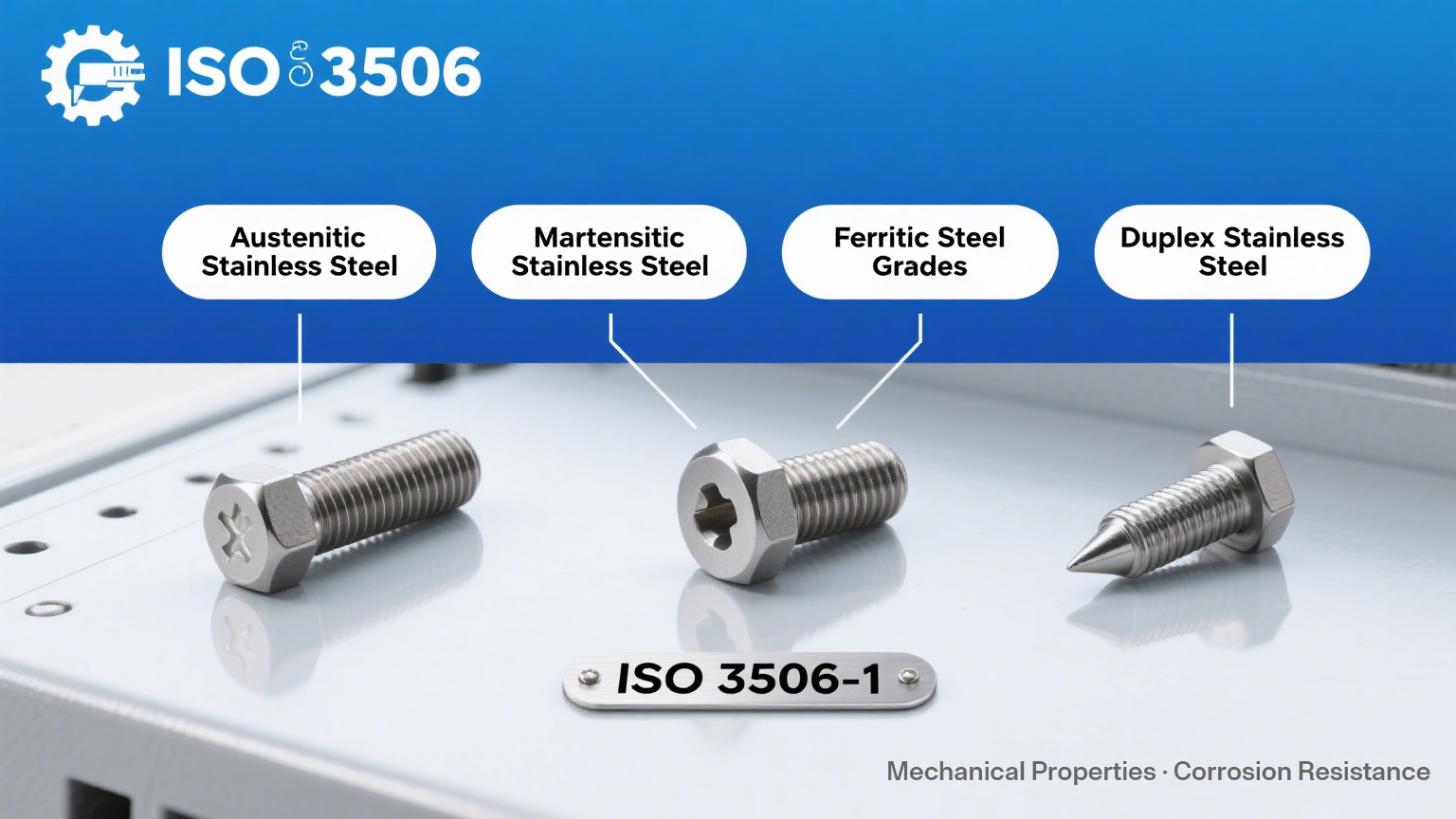When selecting bolts, screws, and studs, it's essential to choose the right material and grade to ensure strength, durability, and resistance to corrosion. The international standard ISO 3506-1 outlines the mechanical properties of corrosion-resistant stainless steel fasteners. This standard serves as a valuable resource for engineers, buyers, and manufacturers, helping them navigate stainless steel grades, property classes, and the appropriate applications for these fasteners.
In this article, we’ll explore the key aspects of ISO 3506, the various types of stainless steel bolts, screws, and similar fasteners, and how their mechanical and corrosion-resistant properties are classified.

What is ISO 3506?
ISO 3506 is the global standard that defines the mechanical properties of stainless steel fasteners. It includes:
- Bolts, screws, and studs
- Set screws and similar fasteners
- Stainless steel grades and property classes
- Minimum breaking torque values
- Requirements for fine pitch thread and ISO metric thread (as specified in ISO 261 and ISO 262)
By adhering to ISO 3506, manufacturers and end users can guarantee consistency, safety, and reliability in stainless steel fasteners across various industries.
Stainless Steel Grades in ISO 3506
Stainless steels used in fasteners are categorized based on their composition and microstructure. The standard highlights several important categories:
- Austenitic Stainless Steels: The most common type for fasteners, known for their excellent corrosion resistance, often utilized in marine and chemical industries.
- Martensitic Stainless Steels: These offer higher strength but lower corrosion resistance, typically used in applications that require wear resistance.
- Ferritic Steel Grades: These provide moderate corrosion resistance and are generally more economical than austenitic types.
- Duplex Stainless Steel (Austenitic-Ferritic): This type combines the strength of martensitic and ferritic steels with the corrosion resistance of austenitic, making it ideal for harsh environments like offshore and petrochemical sectors.
